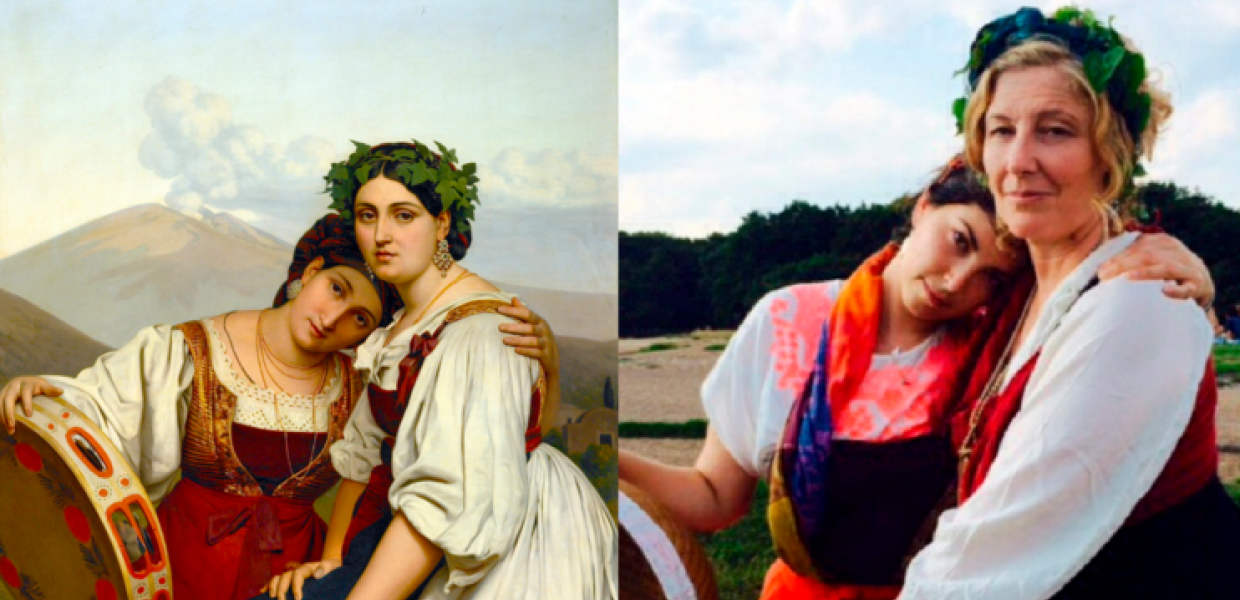Opening the doors to our cultural heritage: notes from the field

This is a guest blog by Madeleine McDonald, Culture24’s Collections Assistant, about her work encouraging institutions to make more of their collections openly available online.
Hi, my name’s Madeleine. As Collections Assistant for Culture24, I look into digital collection objects and paintings with the potential to be used on our sites, including VanGoYourself.com, a platform created as part of Europeana Creative which allows the public to reinterpret famous paintings and share their recreations, and Show.me.uk – our educational website for 7-14 year olds which links up collection items, games and resources from different museums.
Before joining Culture24, as part of my MA in Museums and Galleries in Education, I investigated the social and educational value of VanGoYourself (VGY), and interviewed some of those who had tried it out. Everyone I spoke to enjoyed the social experience, and found it ignited their interest in an artist, or renewed their desire to be creative or visit galleries.
VanGoYourself is made possible through museums openly sharing their images and data. For more initiatives like this to happen, Europeana is campaigning not only for cultural heritage to be digitized, aggregated and enriched, but, where possible, to be made openly available too. As part of this, they came to Culture24 for help getting more re-usable images of artworks into Europeana, and I began working as an advocate, encouraging institutions by using VanGoYourself as an example to bring this mission to life.
Madeleine, left, starring in her own recreation. VanGoYourself, CC BY-SA
There were three strands to this:
- Invite institutions who had contributed works of art to VGY to improve the quality of their images and metadata on Europeana, or share them with Europeana for the first time.
- Approach Europeana data providers with collections suitable for inclusion on VGY.
- Look for institutions that would suit VGY, and were not already Europeana’s partner. Overall, these institutions were evenly spread across all parts of Europe.
So… what did we discover?
We’ve now completed the first part of our outreach and research, and approached 21 institutions already in VGY. In short – we often encountered the same difficulties as when VGY began, and found that it can be a challenging and long process encouraging institutions to make more content available online without copyright restrictions.
A breakdown of the results:
- 24% were interested after some encouragement
- 14% showed interest, but are awaiting confirmation from within their institution
- 9.5% had already begun the process with Europeana
- 14.3 acknowledged there was room for improvement but are not prepared to change their policy on licenses or do not have the resources to do anything at this stage
- 38% did not respond after two attempts.
Why is this?
While talking to institutions, the main barriers we encountered were:
Employee time restraints
As metadata and collection records were created for internal use, the task of making them interoperable and fit for public use is perceived as time consuming and potentially laborious. There may also be a misconception that all of an institution’s images must be shared, rather than just a select set.
A ‘pillar to post’ problem
Individuals within institutions might be keen to share content but are often spread across departments, and might not be able to assign licenses, update metadata or release high resolution images. This lack of clarity means the request can get lost between already overstretched departments.
Concerns about control
Some museums and galleries approach me because they love our websites, however often, there is scepticism about what happens when you share large numbers of downloadable high resolution images with open licenses or without copyright restrictions.
Start small, but think big
From these conversations, I believe there are many individuals in museums open to getting more artworks online, but they are either part of large organisations with procedures to follow or underfunded institutions unable to afford the time or potential costs.
To combat this, we must keep encouraging institutions that are unsure by showing them potential benefits and mollifying their fears. We can keep persuading funders to support digitization and aggregation by presenting case studies about institutions that have successfully embraced the idea of making content openly available online. Here, individual projects like VanGoYourself and Show Me are useful. Though they acquire collection items on a relatively small scale, they have a strong appeal and can be clearly outlined to collection holders and funders.
By opening up high quality content for others to use and remix, cultural institutions fulfil their ultimate goal of achieving wider and even deeper engagement with audiences, but without using up their own resources. If you’re a museum, archive or gallery considering how to do it, you can start small: take a subset from your collection, make it available for others to use and re-use, and then reflect on the results.
These initiatives all open doors for new and innovative ways for researchers, educators, culture lovers and tourists to connect with our amazing shared digital heritage.
